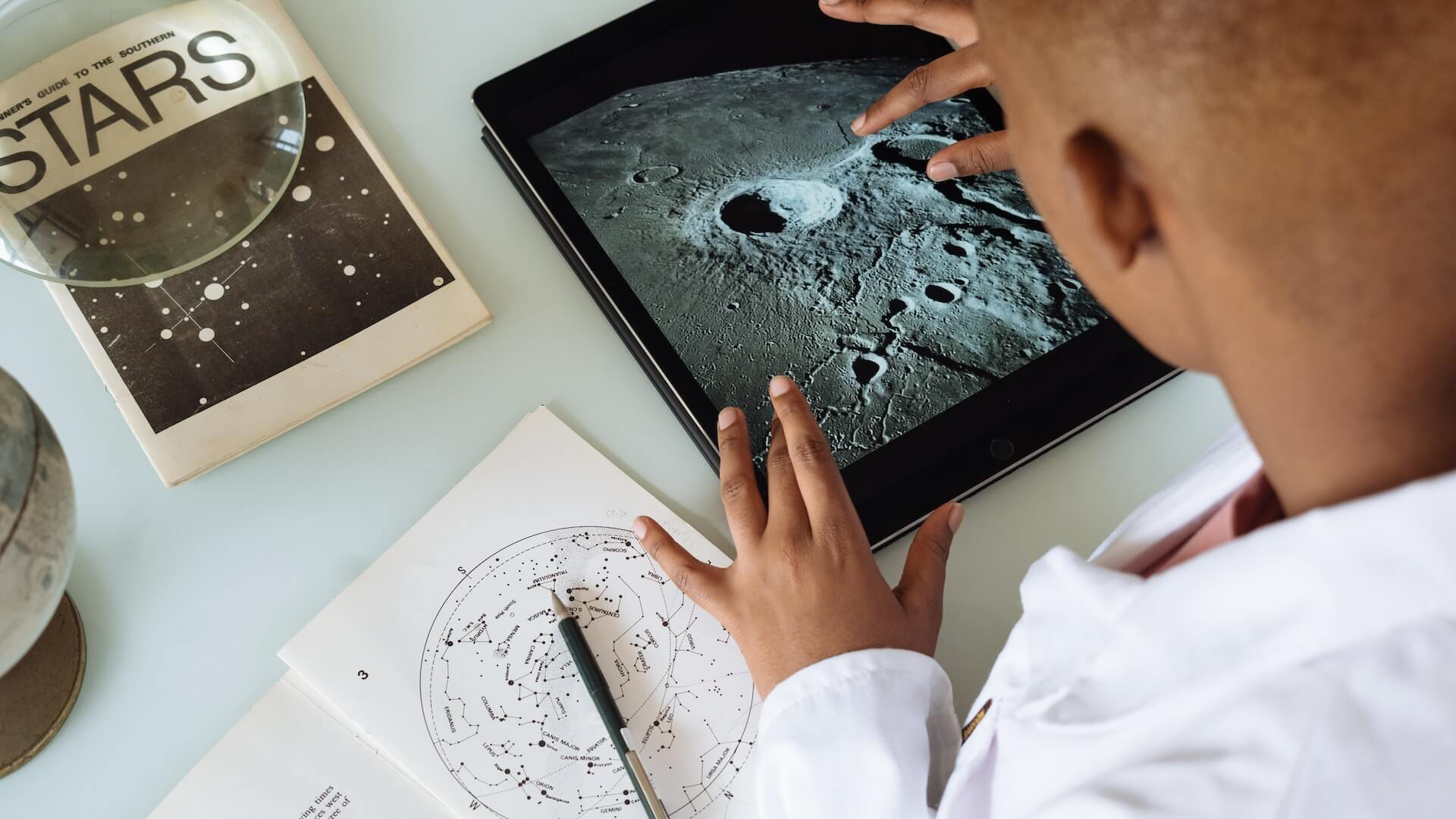With the world rapidly changing, the education system needs to keep up with the times. Technology has already changed the way we live and work, and it is now starting to change the way we learn. The future of education is an exciting topic, but it comes with its own set of challenges. As we look towards the future, we must consider how to balance traditional teaching methods with technological advancements, how to keep students engaged in a rapidly changing world, and how to ensure access to education for all. In this post, we will explore some of the most important innovations and challenges in the world of education. From virtual reality classrooms to personalized learning, we will discuss how technology is changing education, and what it means for students, teachers, and the world at large.
The role of technology in education
In today’s ever-evolving digital landscape, technology has become an integral part of education. It has transformed the way we learn and has opened up a world of possibilities for both students and educators alike. From online learning platforms and virtual classrooms to interactive educational apps and gamification techniques, technology has revolutionized the educational experience.

One of the key benefits of technology in education is its ability to enhance accessibility. With the rise of e-learning platforms, students can now access educational resources and courses from anywhere in the world. This has particularly benefited those in remote areas or with limited access to traditional educational institutions. Additionally, technology has made education more flexible, allowing learners to study at their own pace and customize their learning experience according to their individual needs and preferences.
Moreover, technology has sparked a newfound level of engagement and interactivity in the classroom. Interactive whiteboards, multimedia presentations, and educational apps have made learning more immersive and exciting. Students can now actively participate in lessons, solve problems in a hands-on manner, and engage with educational content in a way that stimulates critical thinking and creativity.
However, along with its numerous benefits, technology in education also presents its fair share of challenges. One concern is the potential for increased screen time and digital distractions. It is essential for educators to strike a balance between utilizing technology as a tool for learning and ensuring students are not overly reliant on it to the detriment of their overall well-being and development.
Another challenge is the digital divide that exists in many parts of the world. While technology has the potential to bridge educational gaps and provide equal opportunities for all, disparities in access to devices and reliable internet connections can exacerbate inequality in education. It is crucial for policymakers and education stakeholders to address these disparities and work towards creating a more inclusive and equitable educational system.
Virtual reality and augmented reality in the classroom
Virtual reality (VR) and augmented reality (AR) have emerged as powerful tools in revolutionizing the classroom experience. These cutting-edge technologies provide students with immersive and interactive learning experiences that were once unimaginable.
With VR, students can explore historical sites, travel through space, or dive into the depths of the ocean without leaving the classroom. They can witness historical events firsthand, manipulate three-dimensional objects, and engage in simulations that enhance their understanding of complex concepts. This level of experiential learning not only captivates students’ attention but also helps them retain information more effectively.
On the other hand, AR overlays digital content onto the real world, merging the virtual and physical realms. Students can use AR apps to interact with virtual objects, dissect virtual organisms, or visualize abstract concepts in a tangible way. This technology transforms the learning environment by providing a new dimension of engagement and interactivity.
However, integrating VR and AR in education also presents challenges. One major obstacle is the cost of acquiring the necessary equipment and software. Schools and institutions must invest in VR headsets, AR devices, and compatible software, which can be a significant financial burden.
Another challenge is ensuring that teachers are adequately trained to effectively incorporate these technologies into their lessons. Educators need to familiarize themselves with the tools, understand how to create meaningful experiences, and navigate potential technical issues. Providing professional development opportunities and ongoing support is crucial in maximizing the potential of VR and AR in the classroom.
Privacy and safety concerns also arise when using these technologies. As students immerse themselves in virtual worlds, data privacy becomes a paramount issue. Educators and policymakers must establish clear guidelines and protocols to protect students’ personal information and ensure a safe learning environment.
Artificial intelligence and machine learning in education
Artificial intelligence (AI) and machine learning (ML) are rapidly transforming various industries, and education is no exception. The integration of AI and ML in education has the potential to revolutionize the way students learn and teachers teach.
One of the key benefits of AI and ML in education is personalized learning. With the help of these technologies, educational platforms can gather and analyze vast amounts of data about a student’s learning patterns, preferences, and strengths. This enables the creation of personalized learning paths tailored to individual students’ needs, allowing them to progress at their own pace and focus on areas where they need more support. AI-powered virtual tutors can also provide real-time feedback, answer questions, and offer targeted recommendations, enhancing the learning experience.
Moreover, AI and ML can assist teachers in administrative tasks, such as grading and assessment. Automated grading systems can save teachers valuable time, allowing them to focus more on providing personalized guidance and support to their students. AI-powered tools can also help identify areas where students are struggling, enabling teachers to intervene and provide timely interventions.
However, alongside the numerous opportunities, the integration of AI and ML in education also presents challenges. One of the concerns is the potential bias that can be embedded in algorithms. If not carefully designed and monitored, AI systems can perpetuate existing biases in educational resources and assessments, leading to inequitable outcomes. It is crucial for developers and educators to ensure that these technologies are unbiased and promote inclusivity.
Another challenge is the ethical use of student data. As AI and ML rely on collecting and analyzing vast amounts of data, there is a need to establish strict data privacy regulations and ensure that students’ personal information is protected. Transparency and consent should be at the forefront when implementing AI and ML in educational settings.
Personalized learning and adaptive technologies
Personalized learning and adaptive technologies are revolutionizing the education sector, providing students with new and exciting opportunities to enhance their learning experiences. Gone are the days of a one-size-fits-all approach to education; now, students can tailor their learning to their individual needs, abilities, and interests.

One of the key benefits of personalized learning is that it allows students to learn at their own pace. Adaptive technologies can analyze a student’s strengths and weaknesses, identifying areas where they may need additional support or challenge. This targeted approach ensures that students are engaged and motivated, as they are not held back by a rigid curriculum or left feeling overwhelmed by material that is too advanced.
Furthermore, personalized learning enables educators to provide customized feedback and guidance to each student. With the help of technology, teachers can track individual progress, identify areas for improvement, and offer personalized recommendations. This level of individual attention fosters a supportive learning environment where students feel valued and empowered.
However, implementing personalized learning and adaptive technologies also presents challenges. Adequate training and professional development for educators are essential to ensure they can effectively utilize these tools in the classroom. Additionally, there may be concerns about the privacy and security of student data, as well as the potential for increased screen time and reduced social interaction.
Open educational resources and online learning platforms
Open educational resources (OER) and online learning platforms have revolutionized education in recent years. These innovative tools offer unprecedented access to high-quality educational materials, courses, and resources, regardless of geographical location or socioeconomic status.
OER refers to freely accessible educational materials that can be used, shared, and modified by educators and learners worldwide. These resources include textbooks, videos, lectures, interactive simulations, and more. With the rise of OER, traditional barriers to education, such as expensive textbooks and limited access to educational resources, are being dismantled.
Online learning platforms have also gained immense popularity and have become a staple in modern education. These platforms provide a flexible and convenient way for students to learn at their own pace, anytime and anywhere. Whether it’s through Massive Open Online Courses (MOOCs), virtual classrooms, or interactive learning modules, online platforms offer a wealth of educational opportunities.
One of the key advantages of OER and online learning platforms is their ability to foster personalized learning experiences. Students can tailor their education to their individual needs and interests, accessing a wide range of resources and courses that align with their learning goals. This individualized approach to education promotes engagement, motivation, and ultimately, better learning outcomes.
However, along with these innovations come challenges that must be addressed. One of the main concerns is ensuring the quality and reliability of OER. With the democratization of content creation, it becomes crucial to curate and vet the resources available to students. Additionally, the digital divide remains a significant obstacle, as not all students have access to the necessary technology and internet connectivity to fully participate in online learning.
Gamification and game-based learning
Gamification and game-based learning are revolutionizing the education industry, bringing a new level of engagement and excitement to classrooms around the world. By integrating game elements into the learning process, educators are able to create dynamic and immersive experiences that captivate students’ attention and enhance their understanding of complex concepts.
The concept of gamification involves applying game-design principles, such as competition, rewards, and challenges, to non-gaming contexts, including education. Students are motivated by the opportunity to earn points, badges, or levels, which stimulates their intrinsic motivation and encourages them to actively participate in the learning process.
Game-based learning takes this a step further, incorporating actual games into the curriculum. These games are designed to be both entertaining and educational, providing students with interactive experiences that promote critical thinking, problem-solving, and collaboration. Whether it’s solving puzzles, exploring virtual worlds, or engaging in simulations, students are able to apply their knowledge in a fun and practical manner.
One of the key benefits of gamification and game-based learning is its ability to cater to different learning styles and preferences. Visual learners can benefit from the immersive graphics and interactive elements, while auditory learners can engage with the audio cues and instructions. Additionally, kinesthetic learners can actively participate in the gameplay, allowing for a more hands-on approach to learning.
However, implementing gamification and game-based learning does come with its own set of challenges. Educators need to carefully select and curate educational games that align with the curriculum and learning objectives. They also need to strike a balance between entertainment and educational value, ensuring that the games are engaging without sacrificing the core academic content.
Furthermore, access to technology and digital resources may pose a challenge for schools with limited resources. Not all students may have access to the necessary devices or internet connectivity, creating a potential digital divide among learners. It is crucial for educators and policymakers to address these disparities and ensure equitable access to technology for all students.
Challenges and concerns in the future of education
While technological advancements and innovative approaches have the potential to revolutionize the education system, they also bring forth their own set of obstacles.

One of the primary concerns is the digital divide. While technology has become increasingly prevalent in classrooms, there are still disparities in access to resources and connectivity. Not all students have equal opportunities to utilize digital tools and participate in online learning, which can further exacerbate existing inequalities in education.
Another challenge is the need to adapt and prepare educators for the evolving landscape of education. Teachers will have to continually update their skills and knowledge to effectively incorporate technology and new teaching methods into their classrooms. Providing adequate professional development and resources for educators is essential to ensure they are equipped to navigate these changes.
Additionally, there is a growing concern about the impact of technology on social interactions and well-being. With the increasing reliance on digital platforms and online learning, there is a risk of reduced face-to-face interaction and the potential for isolation among students. Balancing the integration of technology with fostering interpersonal skills and emotional intelligence will be crucial in addressing this challenge.
Furthermore, the issue of data privacy and security emerges as a significant concern. As educational institutions collect and store vast amounts of student data, ensuring the protection of personal information becomes paramount. Safeguards and policies must be implemented to safeguard student privacy and prevent unauthorized access to sensitive data.
Lastly, the rapid pace of technological advancements itself poses a challenge. Education systems must keep up with the rapidly evolving landscape to remain relevant and provide students with the skills necessary for the future. Adapting curriculum and teaching methods to align with emerging technologies and industries will be essential to prepare students for the jobs of tomorrow.
Bridging the digital divide and ensuring equal access to education
With the transition to online learning, the digital divide has become a glaring issue that needs immediate attention. The digital divide refers to the gap between those who have access to digital devices and the internet and those who do not.
Ensuring equal access to education has become a pressing challenge that needs innovative solutions. Students from disadvantaged backgrounds or remote areas often lack the necessary resources to participate in online learning effectively. This divide can result in limited educational opportunities and hinder the academic progress of these students.
To bridge this digital divide, various strategies need to be implemented. One such approach is to provide affordable or free internet access to underserved communities. Governments, educational institutions, and tech companies can collaborate to establish community Wi-Fi zones or subsidize internet plans. This would enable students to access educational content and connect with their teachers and peers.
In addition to internet access, providing students with the necessary digital devices is essential. Schools and organizations can work towards equipping students with laptops, tablets, or even smartphones, ensuring they have the tools they need to engage in online learning. Collaborations with technology companies or implementing device lending programs can help achieve this goal.
Furthermore, training and digital literacy programs should be offered to students, parents, and educators. Many individuals may not be familiar with using digital tools effectively, and providing them with the necessary training would enhance their ability to navigate online learning platforms and utilize educational resources.
While bridging the digital divide is a complex challenge, innovative solutions are emerging. For instance, educational content can be made available offline through downloadable materials or distributed on USB drives in areas with limited internet connectivity. Virtual reality and augmented reality technologies can also be leveraged to create immersive learning experiences that do not solely rely on internet access.
The importance of teacher training and professional development in the digital age
As technology continues to shape the way we learn and teach, it is crucial for educators to adapt and enhance their skills to effectively utilize these innovative tools and platforms.
Gone are the days when teachers could solely rely on traditional methods of instruction. Today’s classrooms are filled with digital devices, interactive whiteboards, educational apps, and online learning platforms. For educators to harness the potential of these technologies and deliver quality education, they must be equipped with the necessary knowledge and expertise.
Teacher training programs now need to place a greater emphasis on digital literacy, technological integration, and pedagogical strategies for online and blended learning environments. Educators must learn how to leverage digital tools to engage students, foster collaboration, and differentiate instruction to meet the diverse needs of learners.
Moreover, professional development opportunities play a vital role in ensuring that teachers remain up-to-date with the latest advancements in education technology. Ongoing training sessions, workshops, and conferences provide educators with the chance to learn new techniques, exchange ideas with peers, and stay abreast of emerging trends in the field.
However, while the importance of teacher training in the digital age cannot be overstated, challenges do exist. Limited resources, time constraints, and resistance to change can hinder the implementation of effective professional development programs. Education systems must prioritize and invest in providing educators with the necessary support and resources to acquire and refine digital skills.
Conclusion
The advancements we’ve discussed, from virtual reality to personalized learning, offer exciting opportunities to revolutionize the way we teach and learn. However, we must also acknowledge the challenges that arise, such as access to technology and the need for teacher training. Despite these obstacles, the future of education is bright and promising. By embracing these innovations and addressing the challenges head-on, we can create a more inclusive, engaging, and effective educational experience for learners of all ages. Let’s embark on this journey together and shape the future of education for generations to come.



